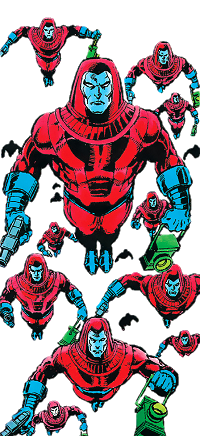
Oa is a fictional planet that lies at the center of the DC Comics universe. Since its inception, Oa has been the planetary citadel of the Guardians of the Universe and headquarters of the Green Lantern Corps. It first appeared in Green Lantern #1, when the Guardians summoned Hal Jordan's "energy duplicate" so they could hear of his origin.
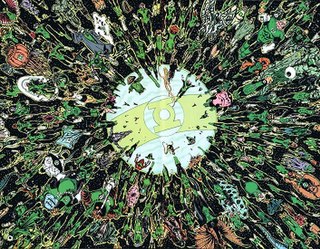
Green Lantern Corps is the name of a fictional intergalactic law enforcement organization appearing in comics published by DC Comics. They patrol the farthest reaches of the DC Universe at the behest of the Guardians, a race of immortals residing on the planet Oa. According to DC continuity, the Green Lantern Corps have been in existence for three billion years. Currently operating amongst the 3600 "sectors" of the universe, there are 7204 members. Each Green Lantern is given a power ring, a weapon granting the use of incredible abilities that are directed by the wearer's own willpower.

The Guardians of the Universe are a race of extraterrestrial superhero characters appearing in American comic books published by DC Comics, commonly in association with Green Lantern. They first appeared in Green Lantern #1, and were created by John Broome and Gil Kane. The Guardians of the Universe have been adapted to a number of films, television programs, and video games.

Guy Darrin Gardner, one of the characters known as Green Lantern, is a superhero appearing in American comic books published by DC Comics, usually in association with the Green Lantern Corps, of which he is a member. For a time in the late 1980s and early 1990s, he was also a significant member of the Justice League. Gardner's original design was based on actor Martin Milner.

Thaal Sinestro is a supervillain appearing in American comic books published by DC Comics, particularly those featuring Green Lantern. Sinestro is a former Green Lantern Corps member who was dishonorably discharged for abusing his power. He is the archnemesis of Hal Jordan and founder of the Sinestro Corps.
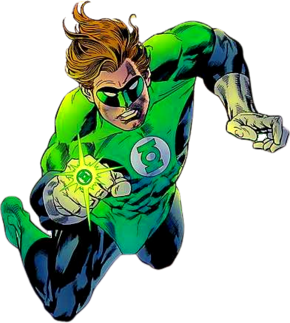
Harold "Hal" Jordan, one of the characters known as Green Lantern, is a superhero appearing in American comic books published by DC Comics. The character was created in 1959 by writer John Broome and artist Gil Kane, and first appeared in Showcase #22. Hal Jordan is a reinvention of the previous Green Lantern who appeared in 1940s comic books as the character Alan Scott.
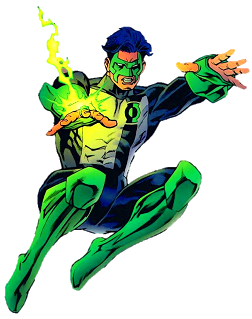
Kyle Rayner, one of the characters known as Green Lantern, is a superhero appearing in American comic books published by DC Comics. The character is depicted as being associated with the Green Lantern Corps, an extraterrestrial police force of which he has been a member.
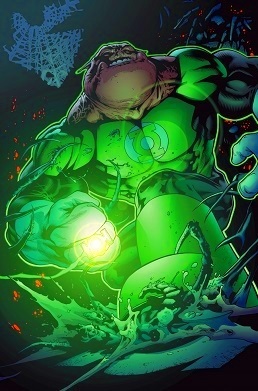
Kilowog is a superhero appearing in American comic books published by DC Comics. The character is a member of the Green Lantern Corps.

Abin Sur is a superhero appearing in American comic books published by DC Comics. He was a member of the Green Lantern Corps and is best known as the predecessor of Green Lantern Hal Jordan, whom Abin Sur's power ring chose as his replacement. After the Infinite Crisis events, details of Abin Sur's past is altered and was revealed to be a brother-in-law of Sinestro and uncle of his daughter Soranik Natu. He was modeled after Yul Brynner.

Mogo is a fictional character comic book character, a superhero appearing in publications by the American publisher DC Comics. Mogo is a sentient planet, and as a member of the interplanetary police force known as the Green Lantern Corps, appearing as a supporting character in storylines featuring that group, specifically the Green Lantern franchise. Created by writer Alan Moore and writer Dave Gibbons, Mogo first appeared in Green Lantern #188 in a story titled "Mogo Doesn't Socialize".
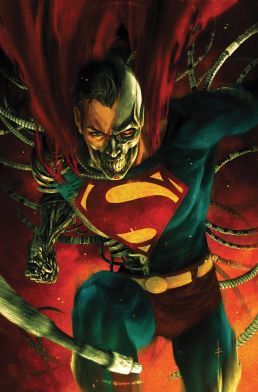
Henry "Hank" Henshaw is a supervillain appearing in American comic books published by DC Comics, and normally goes by the name Cyborg Superman. Created by writer-artist Dan Jurgens, the character originally appeared primarily as an enemy of Superman, however in recent years he has also been an enemy of the Green Lantern Corps.

Parallax is a supervillain appearing in American comic books published by DC Comics.

John Stewart, one of the characters known as Green Lantern, is a superhero appearing in American comic books published by DC Comics and was the first African-American superhero to appear in DC Comics. The character was created by Dennis O'Neil and Neal Adams, and first appeared in Green Lantern #87. Stewart's original design was based on actor Sidney Poitier.
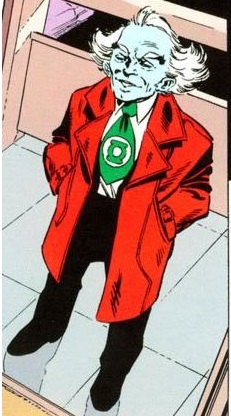
Ganthet is a fictional character in the DC Comics universe, who first appeared in 1992 in Larry Niven and John Byrne’s graphic novel Green Lantern: Ganthet's Tale (ISBN 1-56389-026-7). He is also the husband of Sayd.

Arisia Rrab is a superheroine appearing in American comic books published by DC Comics, usually those featuring the Green Lantern Corps, an intergalactic police force of which she is a member. Arisia is a humanoid alien with golden-yellow skin, hair and eyes, and has pointed, elven ears.

A power ring is an object featured in American comic books published by DC Comics. The power ring first appeared in All-American Comics #16 on July 14, 1940.

Boodikka is a character appearing in comic books published by DC Comics, and a member of the Green Lantern Corps. Her name is a play on the ancient British warrior-queen Boudica.

The Sinestro Corps, occasionally known as the Yellow Lantern Corps, is a supervillainous group and analog to the Green Lantern Corps in the DC Universe. They are led by Sinestro, and derive power from the emotional electromagnetic spectrum of fear.
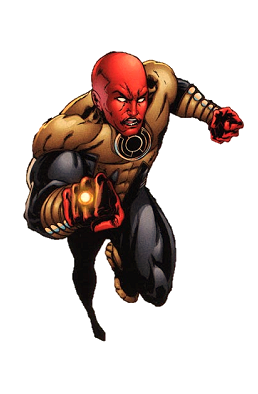
Amon Sur is a supervillain in the DC Universe. He is the son of the Green Lantern Abin Sur and nephew of the villain/antihero Sinestro by marriage with Sur's sister Arin.
Wrath of the First Lantern is a Green Lantern comic book. It was received with critical acclaim, with critics praising Geoff Johns' writing, art, action, and worldbuilding but criticized heavily on the tie-ins.
